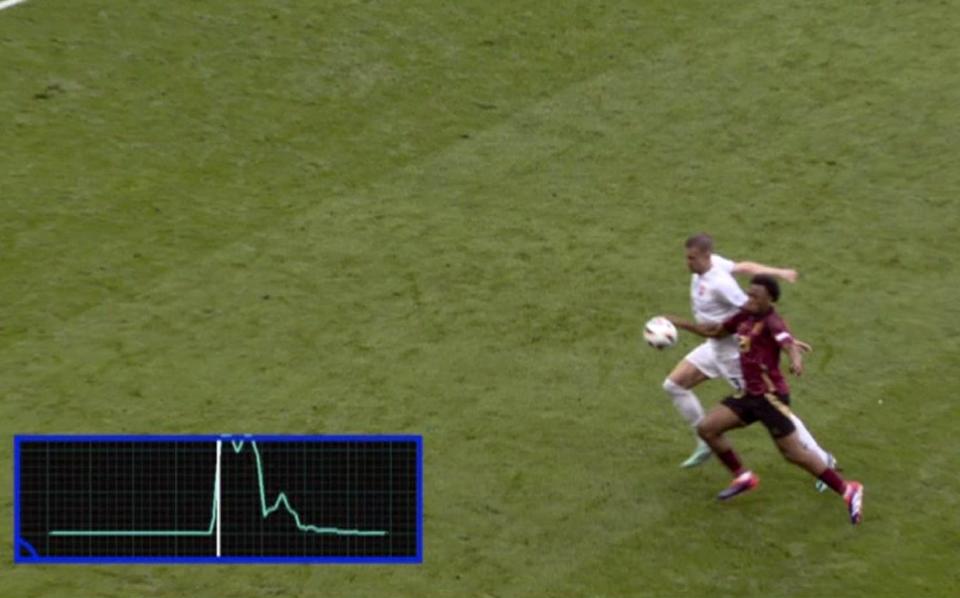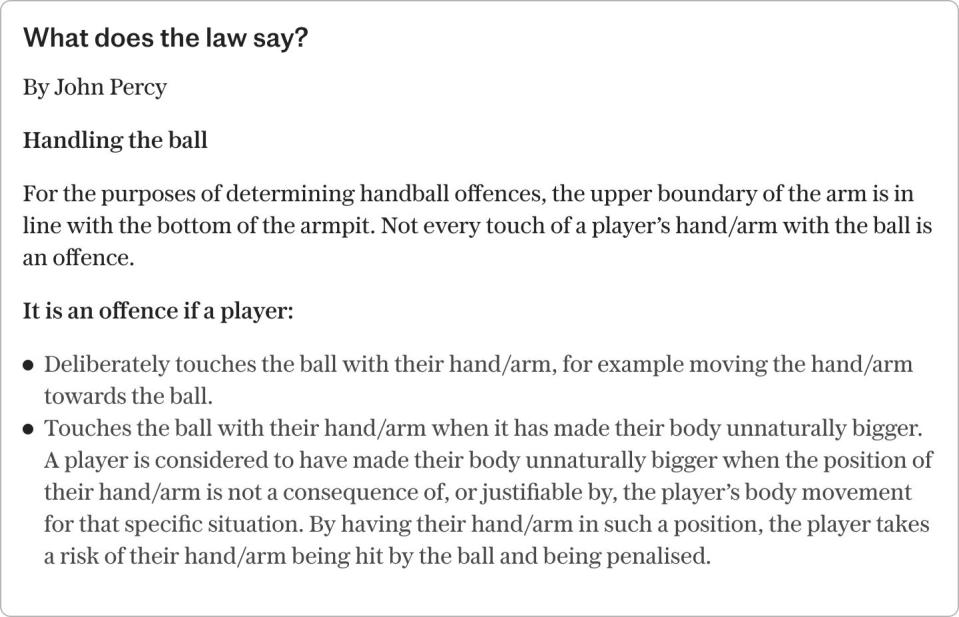‘Snicko’ makes Euro 2024 debut as Belgium goal disallowed in decision Gary Lineker brands ‘b------t’

The “Snickometer” ignited immediate controversy at Euro 2024 after a Belgium goal was disallowed in a decision branded “b------t” by Gary Lineker.
Football’s equivalent of the system used in cricket has been introduced this year and swiftly drew fierce criticism as Slovakia celebrated a famous win over the Belgians in Frankfurt.
Romelu Lukaku put away a cross from substitute Lois Openda four minutes from time but the goal was disallowed after a lengthy VAR check from referee Umet Meler.
Another Lukaku equaliser is disallowed by VAR ❌
Slovakia so close to an upset here 👀#Euro2024 | #BELSVK pic.twitter.com/CIe2KO6EoL— ITV Football (@itvfootball) June 17, 2024
It was ruled that Openda handled the ball before running down the left to deliver the cross, but the decision has polarised opinion across football.
Lineker branded it a “b------t decision” on X, while Belgium’s players were infuriated. Another Lukaku goal had been ruled out earlier in the match.
However, Openda admitted after the match that the decision was correct. “When I look at the images, I actually hit the ball with my hand,” he said. “Initially I didn’t realise it and I was very happy with my assist. But now that I see the images, there is indeed contact.
“The defender tried to throw me off balance, causing me to hit the ball with my hand so it wasn’t conscious and it was unlucky but the referee made his decision.”
Belgium’s manager Domenico Tedesco, already under fire for such a shock defeat, also refused to become embroiled in a row over the flashpoint.
He said: “It’s tough for me to speak about it. Maybe if we’d won I would have said more. But I want to be a good loser so I don’t think we should speak about the ref or the VAR.
“I have to trust them. If they decide it’s handball, then it’s handball and we have to accept it.”
Christina Unkel, ITV’s referee analyst and an expert on VAR, said after the game: “The deliberation interpretation has recently changed.
“However, this is going to be considered a deliberate offence as the arm is near the shoulder level because the arm is extended and the touch helps control the ball.”
Sheffield Wednesday manager Danny Rohl, a pundit for the match, said: “It looked like the hand was in a natural position” while Eni Aluko added: “I can see the extension of the arm, I can see the ball’s trajectory change, but it is harsh.”
At Euro 2024, broadcasters will be sent a “touch detection” graphic used by officials to make key decisions on handballs.
This European Championship is the first to feature an advanced match ball with a microchip that sends precise data to referees in real time. The chip allows officials to see exactly when contact was made with the ball, as with “Snicko” in cricket.

I would have allowed the goal to stand
The tournament got its first glimpse of ‘snicko’ in Germany and the decision to disallow Belgium’s goal was not without controversy.
The referee views the monitor and determines that there was deliberate movement and the ball certainly came into the attacker’s hand/arm.
The law states it is a handball if a player deliberately touches the ball with their hand/arm, for example moving the hand/arm towards the ball.
The referee determined there was a deliberate action by Lois Openda and a deliberate handball had taken place, hence the decision to disallow the ‘goal’.
There is no doubt that this decision highlights once again the need for IFAB to revisit the law.
The attacker, Openda, was jostling with his opponent. I do not agree that there was a deliberate action by the RB Leipzig forward.
The incident was a long way from goal and frankly I would have not given a free kick for alleged handball and I would have allowed the goal to stand.
What is Snicko?
Television viewers of Euro 2024 have a new gizmo to get to grips with: ‘Snicko’.
For the first time, broadcasters are sent a “touch detection” graphic used by officials to make key decisions regarding handballs – like Openda’s – and offsides.
This summer’s tournament is the first European Championship to feature an advanced match ball with a microchip that sends precise data to referees in real time. The chip will allow officials to see exactly when contact was made with the ball, as with the snickometer system in cricket.
As well as providing information on handball decisions, such data could prove crucial in determining certain offside decisions, for example, as it will show whether an attacking player touched the ball on its way to a team-mate.
The hope is that the technology will reduce the time spent by VAR in resolving such incidents.
Similar technology was deployed during the World Cup in Qatar, but without the relevant graphics being broadcast to viewers.
In one example at the World Cup, ball manufacturers Adidas proved that Cristiano Ronaldo had not made contact with the ball for one of Portugal’s goals against Uruguay, with use of their snickometer-equivalent technology. This was not broadcast live to television viewers, however.

 Yahoo Sport
Yahoo Sport 





































